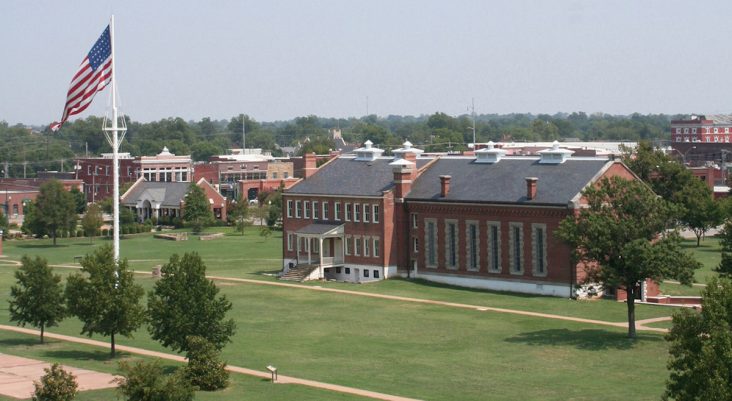Archaeological study conducted at Fort Smith National Historic Site
by August 30, 2021 5:40 pm 999 views

photo courtesy National Park Service
A geophysical archaeological study at the Fort Smith National Historic Site will help the park plan for future projects. A team of geophysical archaeologists from the National Park Service Midwest Archeological Center in Lincoln, Neb., conducted the site survey Aug. 16-20.
The team used fancy technology, including magnetometers, ground-penetrating radar and an electromagnetic induction meter to “see” beneath the surface at the site, said Lisa Frost, park superintendent.
“If you have walked around the first fort site this week, you might have noticed the gridwork marked out, and people walking back and forth carrying or pushing different instruments,” the site posted on its Facebook page Aug. 20.
The survey will allow the park officials to learn more about what is beneath the surface at the site and locate possible historic features in a non-destructive way, Frost said. Along with giving more insight into the fort and the surrounding area, that look under the surface will allow the staff to work to better preserve the park for the public, understand what resources need to be protected and better educate the public, Frost said.
“Basically it will allow for the mission of the National Park Service,” she said.
The mission of the NPS is to preserve “unimpaired the natural and cultural resources and values of the National Park System for the enjoyment, education and inspiration of this and future generations.”
There have been numerous archaeological studies at the Fort Smith National Historic Site throughout the park’s history, including an initial excavation to identify the location of the fort by Clyde Dollar in 1958, prior to the site being designated a National Historic Landmark in 1961. More recently, there were studies conducted in 2000, 2002, 2003 and 2009, according to the National Park Service.
“In order to better preserve and protect the area, we have to know what is beneath the surface,” Frost said. “The technology used by the team (from the Midwest Archeological Center) to do that without digging. It allows them to pinpoint and confirm the exact location of buildings or other objects of interest.”
A full report on the study is expected within the next few weeks. Once that letter is received, plans can be made on what to do with the information, Frost said. That report will let the site know what was found and allow them to plan projects, she said.
The project is one of many being done this year as part of the National Park Service’s work on forts and trading posts in its system. The crew from the Midwest Archeological Center is scheduled to return to the site next spring.
